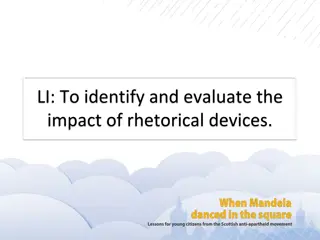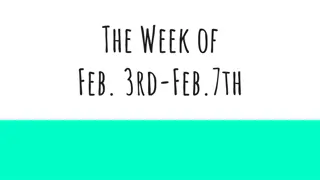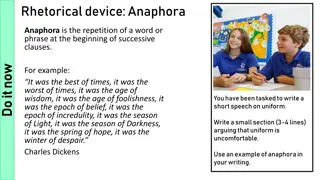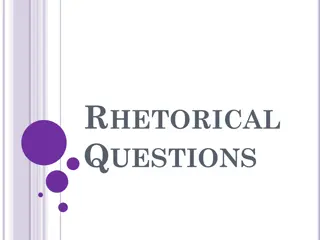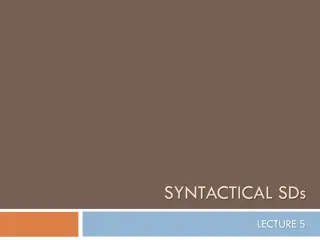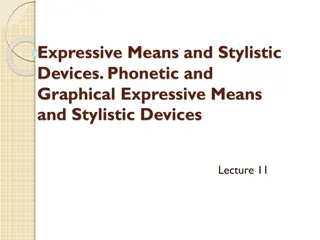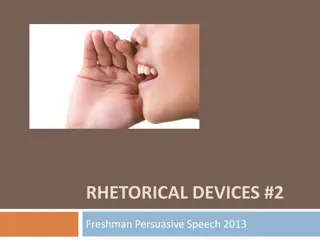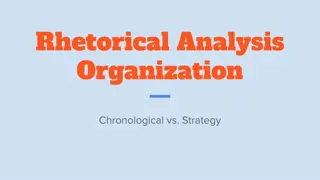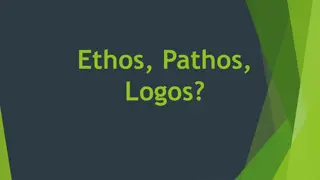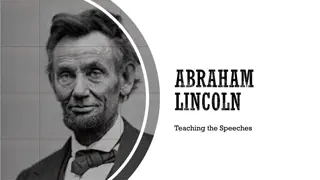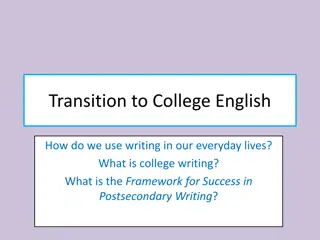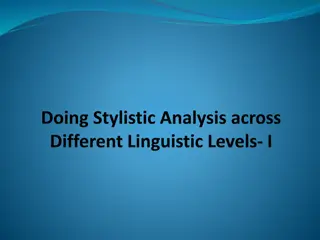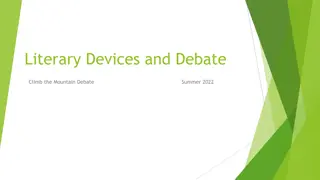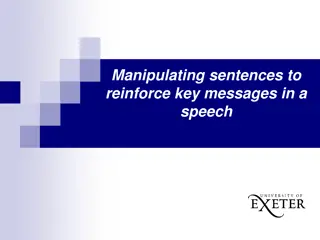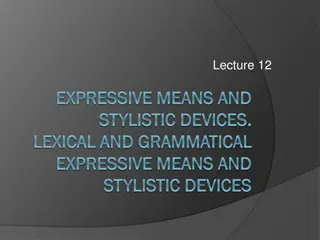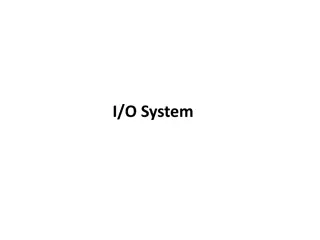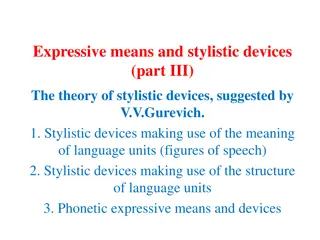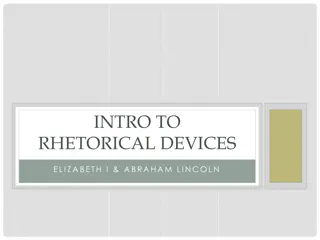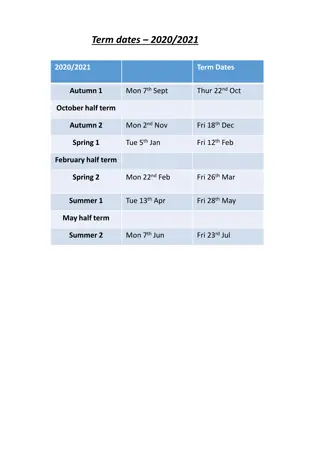Exploring Rhetorical and Stylistic Devices in Speeches
Delve into the world of rhetorical and stylistic devices used in speeches, such as repetition, imagery, and devices of comparison like simile, metaphor, analogy, and juxtaposition. Understand how these devices enhance the impact and effectiveness of communication, with examples ranging from political speeches to everyday analogies.
Uploaded on Sep 22, 2024 | 0 Views
Download Presentation

Please find below an Image/Link to download the presentation.
The content on the website is provided AS IS for your information and personal use only. It may not be sold, licensed, or shared on other websites without obtaining consent from the author. Download presentation by click this link. If you encounter any issues during the download, it is possible that the publisher has removed the file from their server.
E N D
Presentation Transcript
RHETORICAL/STYLISTIC DEVICES
REPETITION AT THE BEGINNING: We shall go on to the end, we shall fight in France, we shall fight on the seas and oceans AT THE END: The cars do not sell because the engineering is inferior, the quality of materials is inferior, and the workmanship is inferior. THROUGHOUT: It may just be that a writer repeats a certain word/phrase throughout the entirety of the speech. For instance, news outlets have noted how many times President Trump references fake news in his recent speeches as he tries to downplay the Mueller investigation and other hot-topic issues.
IMAGERY What kind of imagery? Sight? Sound? Smell? Taste? Touch? Recall the President Carter piece on preserving the Arctic; he includes nature imagery: landscape and animals SIGHT: brilliant mosaic of wildflowers, mosses, and lichen that hugged the tundra. SOUND: the sweep of tundra before us became flooded with life, with the sounds of grunting animals and clicking hooves filling the air. *Remember that these images were employed to elicit appreciation from the audience so that they could understand the damage to wildlife if industrialization were to occur.
DEVICES of COMPARISON Simile Metaphor Analogy Juxtaposition
SIMILE Compares two things using like or as Trying to navigate the complicated process of college applications is likebeing lost in a labyrinth.
METAPHOR Makes a comparison without like or as Ex: The blank paper is the dawning of a new day for any writer. theblank paper is compared to a new day to suggest a fresh start or opportunity. The ad at right suggests that a Visa is a lock; it protects one s purchases and identity.
ANALOGY An analogy makes a comparison between two things (with or without like or as) EXAMPLE: Including warning labels on music with explicit lyrics is the same as the MPAA ratings system; both alert consumers to potentially offensive material.
JUXTAPOSITION Places two things/concepts next to each other for comparison/contrast With this faith we will be able to transform the jangling discords of our nation into a beautiful symphony of brotherhood. (MLK what is vs. what can be, thereby offering hope for future)
DICTIONbut what kind?! Are the words related to defeat? Triumph? Pain? Hope? Longing? EXAMPLE: Oprah s speech at the Golden Globes: So I want all the girls watching here and now to know that a new day is on the horizon! And when that new day finally dawns, it will be because of a lot of magnificent women, many of whom are right here in this room tonight, and some pretty phenomenal men, are fighting hard to make sure that they become the leaders who take us to the time when nobody ever has to say me too again. Thank you. DICTION: Hope, triumph In her Golden Globes speech, Oprah Winfrey employs hopeful diction in order to reassure her audience that equality is possible.
MISCELLANEOUS Punctuation Tense POV Sentence structures (commands, questions ) Other devices: hyperbole, allusion, etc.



